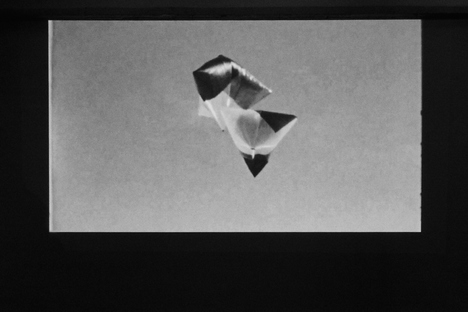Tomás Saraceno
Visual Artist (AR), website
Tomás Saraceno’s (b.1973, Argentina) oeuvre could be seen as an ongoing research, informed by the worlds of art, architecture, natural sciences, astrophysics and engineering; his floating sculptures, community projects and interactive installations propose and explore new, sustainable ways of inhabiting and sensing the environment. Aerocene, an open-source community project for artistic and scientific exploration initiated from Saraceno’s vision, becomes buoyant only by the heat of the Sun and infrared radiation from the surface of Earth.
- Aerocene, Launches at White Sands, New Mexico Unites States

video, 2016, 8 min
This video presents an action conducted by the Aerocene community. Some scientists maintain that the Anthropocene, our current epoch that is marked by human impact on biodiversity and climate, may have begun on July 16th 1945, at White Sands (USA), with the detonation of the first atomic bomb. 70 years later, in the exact same location, the Aerocene community conducted a human flight, using only the power of the sun. The flight was held in the context of “Space without Rockets”, an event organized by Aerocene in collaboration with curator Rob la Frenais and the University of Texas. For 2 hours and 15 minutes, seven people were lifted into the air, breaking the world record for the longest and the most sustainable certified manned flight without fossil fuels, solar panels, helium or batteries.
Aerocene flight serves as a petition for an ethical collaboration with the atmosphere.